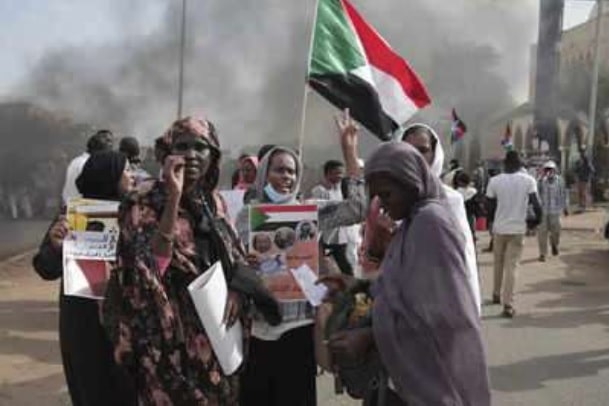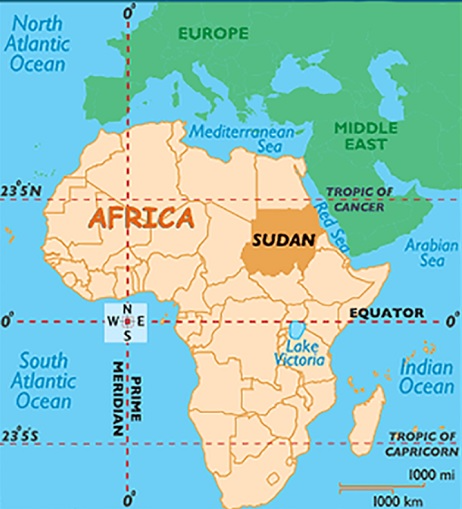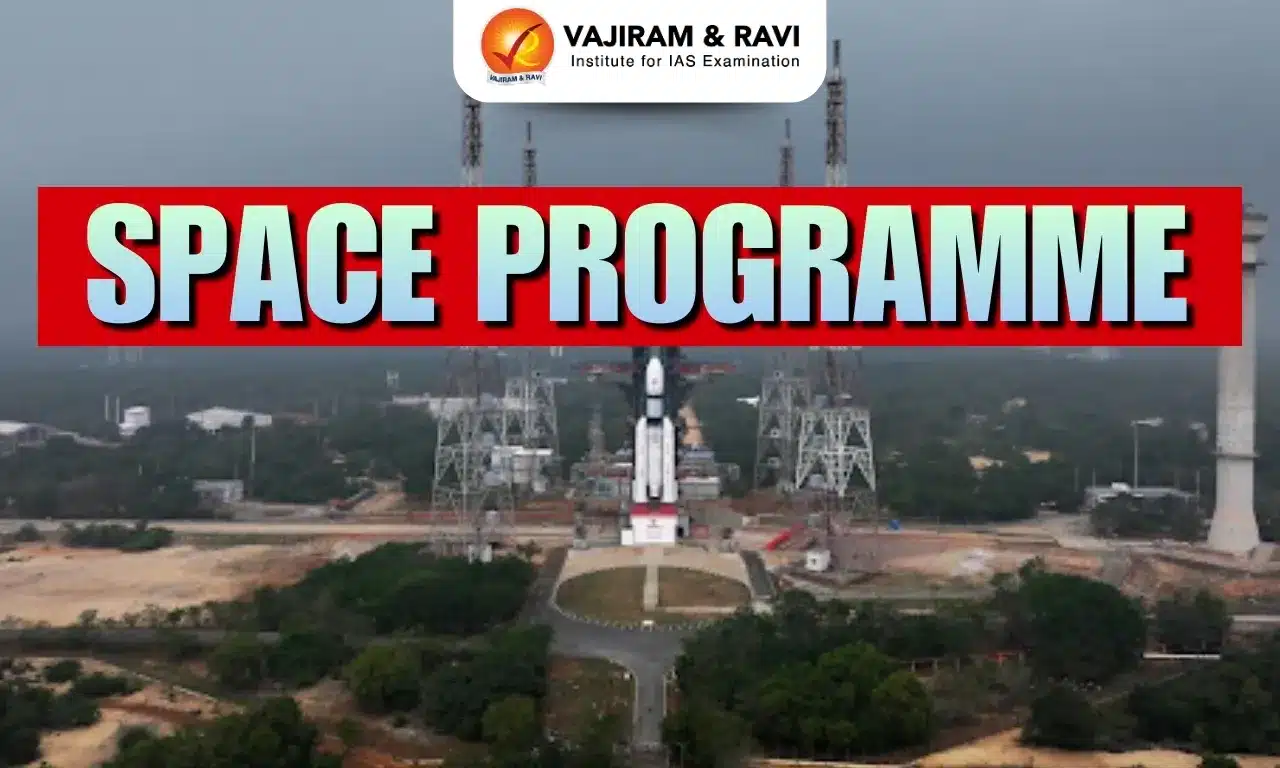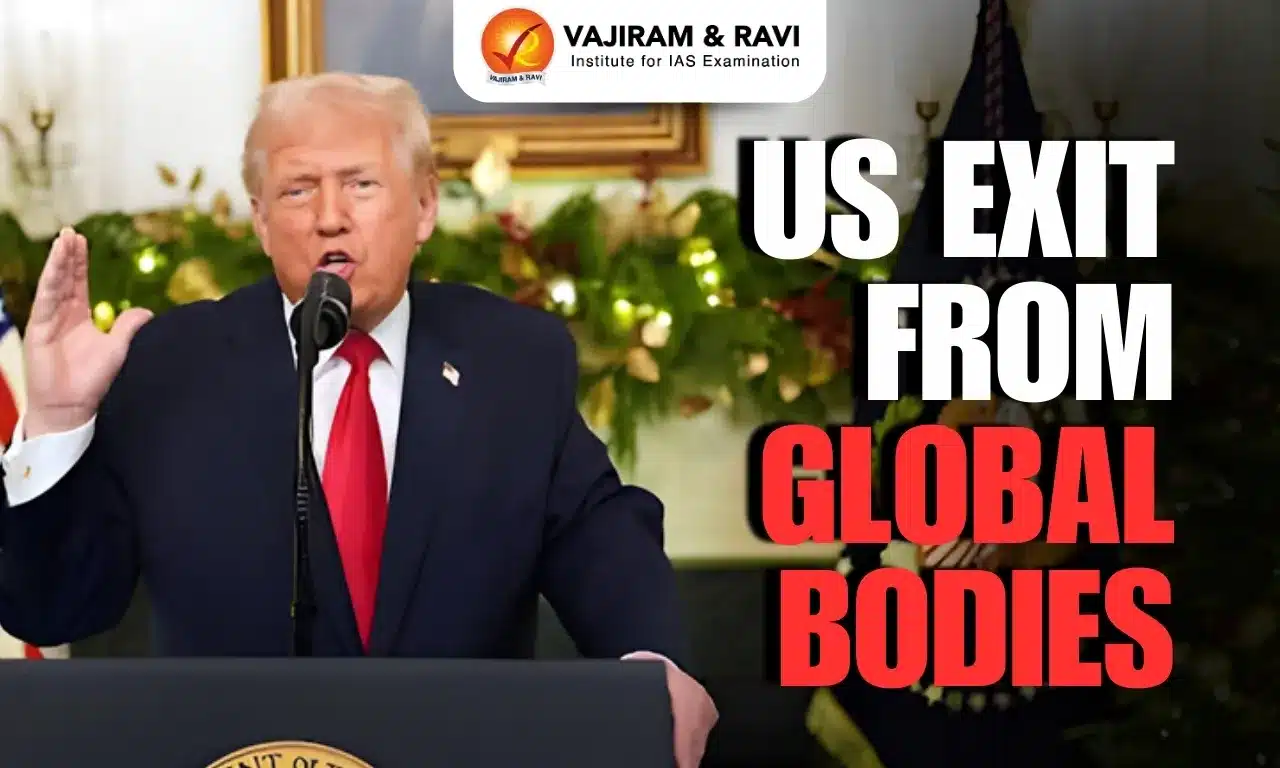What’s in today’s article?
- Why in news?
- News Summary: Sudan crisis
- What is the origin of the Sudan conflict?
- Impact of the Sudan crisis
Why in news?
- Fierce fighting broke out between the Sudan’s army and its paramilitary forces in Khartoum.
- Clashes erupted after weeks of heightened tensions between the Rapid Support Forces (RSF), a paramilitary group led by Mohamed Hamdan Dagalo — also known as Hemedti — and the military, headed by Lt Gen Abdel Fattah al-Burhan.
News Summary: Sudan crisis
What is the origin of the Sudan conflict?
- Ouster of President Omar al-Bashir
- The roots of the ongoing conflict go back to April 2019, when Sudan’s long-serving authoritarian President Omar al-Bashir was overthrown.
- He was overthrown by military generals following a countrywide uprising against him.
- Constitution of the Sovereignty Council – a power-sharing body
- Despite Bashir’s ouster, civilians continued their demonstrations, seeking democratic elections and the establishment of a civilian government.
- This led to the constitution the Sovereignty Council, a power-sharing body of military officers and civilians.
- This council would lead Sudan to elections at the end of 2023 and Abdalla Hamdok was appointed Prime Minister for the transitional period
- Military overthrew Hamdok’s government in October 2021
- The new arrangement was short-lived as the military overthrew Hamdok’s government in October 2021, and Burhan became de-facto leader of the country.
- Dagalo, vice-president of the ruling council and Burhan’s partner in the military seizure of power, became the second-in-command.
- Burhan announced that the military would hold power until elections are held in July 2023.
- The new arrangement was short-lived as the military overthrew Hamdok’s government in October 2021, and Burhan became de-facto leader of the country.
- Tussle between Army and RSF
- Soon after the 2021 coup, relations between the military and the RSF deteriorated.
- RSF was formed in 2013, and has been accused of human rights abuses, including the massacre of more than 120 protesters in June 2019.
- Burhan and Dagalo disagree over how the 10,000-strong RSF should be integrated into the army, and which authority should oversee that process.
- Soon after the 2021 coup, relations between the military and the RSF deteriorated.
- Other fault lines
- Civilians have called for the handover of lucrative military holdings in agriculture, trade, and other industries.
- These are crucial source of power for an army that has often outsourced military action to regional militias.
- Another point of contention is the pursuit of justice over allegations of war crimes by the military and its allies in the conflict in Darfur from 2003.
- The International Criminal Court (ICC) is seeking trials for Bashir and other Sudanese suspects.
- Civilians have called for the handover of lucrative military holdings in agriculture, trade, and other industries.
- Ferocious battle broke out
- Later, the RSF was redeployed around the country, which the army saw as a provocation and threat.
- With both sides on edge, a ferocious battle broke out recently.
Impact of this crisis
- On Sudan
- The third largest country in Africa by size has seen repeated pro-democracy protests since the 2021 coup.
- But the battle between the army and RSF has likely made Sudan’s transition to democracy more difficult.
- Some experts fear the tussle could transform into a wider conflict leading to the country’s collapse.
- Sudan’s economy is struggling, battered by hyperinflation and crippled by massive foreign debt.
- Billions of dollars given in international support and debt relief, were frozen after the ouster of the Hamdok government.
- On regional stability
Image caption: Location of Sudan
- Sudan is in a volatile region, bordering the Red Sea, the Sahel, and the Horn of Africa.
- The country’s strategic location and agricultural wealth have attracted regional power plays.
- Hence, stability in Sudan is vital for regional peace and security.
- Several of Sudan’s neighbours, including Ethiopia, Chad and South Sudan, have been affected by political upheavals and conflict.
- Western powers fear the potential for a Russian base on the Red Sea, which Sudanese military leaders have expressed openness to.
- On India
- Over the years, India has developed close ties with Sudan and in recent years warmed up to the Government of South Sudan as well.
- India’s Election Commission had helped organise Sudan’s first general elections in the late 1950s.
- Indian engineers had played a major role in setting up the country’s sugar industry and railways.
- In the last decade, India’s investments have been mainly in the energy sector.
- In 2003, India’s ONGC Videsh Ltd (OVL) had invested $750 million to acquire 25 per cent equity held by the Talisman group in the Greater Nile Petroleum Operating Company (GNPOC).
- Therefore, it is natural that conflict and instability in the region will have an adverse impact on India.
- Over the years, India has developed close ties with Sudan and in recent years warmed up to the Government of South Sudan as well.
Q1) What is the geographical location of Sudan?
Sudan is a country located in northeastern Africa. It is the third-largest country in Africa, after Algeria and the Democratic Republic of the Congo. Sudan is bordered by Egypt to the north, Libya to the northwest, Chad to the west, the Central African Republic to the southwest, South Sudan to the south, Ethiopia to the southeast, and Eritrea to the east. The capital city of Sudan is Khartoum, which is located at the confluence of the White Nile and Blue Nile rivers.
Q2) What is Darfur conflict?
The Darfur conflict is a complex and ongoing conflict that began in 2003 in the Darfur region of western Sudan. The conflict began when rebel groups, mostly made up of members of the Fur, Zaghawa, and Masalit ethnic groups, began attacking government targets, claiming that the government was neglecting the needs of the region and its people. The government of Sudan responded by arming and supporting Arab militias, known as the Janjaweed, who launched a campaign of violence against the rebel groups and the civilian population.
Source: Why are Sudan’s army and paramilitary forces fighting each other? | Indian Express | IDSA
Last updated on January, 2026
→ Check out the latest UPSC Syllabus 2026 here.
→ Join Vajiram & Ravi’s Interview Guidance Programme for expert help to crack your final UPSC stage.
→ UPSC Mains Result 2025 is now out.
→ UPSC Notification 2026 is scheduled to be released on January 14, 2026.
→ UPSC Calendar 2026 has been released.
→ UPSC Prelims 2026 will be conducted on 24th May, 2026 & UPSC Mains 2026 will be conducted on 21st August 2026.
→ The UPSC Selection Process is of 3 stages-Prelims, Mains and Interview.
→ Prepare effectively with Vajiram & Ravi’s UPSC Prelims Test Series 2026 featuring full-length mock tests, detailed solutions, and performance analysis.
→ Enroll in Vajiram & Ravi’s UPSC Mains Test Series 2026 for structured answer writing practice, expert evaluation, and exam-oriented feedback.
→ Join Vajiram & Ravi’s Best UPSC Mentorship Program for personalized guidance, strategy planning, and one-to-one support from experienced mentors.
→ UPSC Result 2024 is released with latest UPSC Marksheet 2024. Check Now!
→ UPSC Toppers List 2024 is released now. Shakti Dubey is UPSC AIR 1 2024 Topper.
→ Also check Best UPSC Coaching in India


















